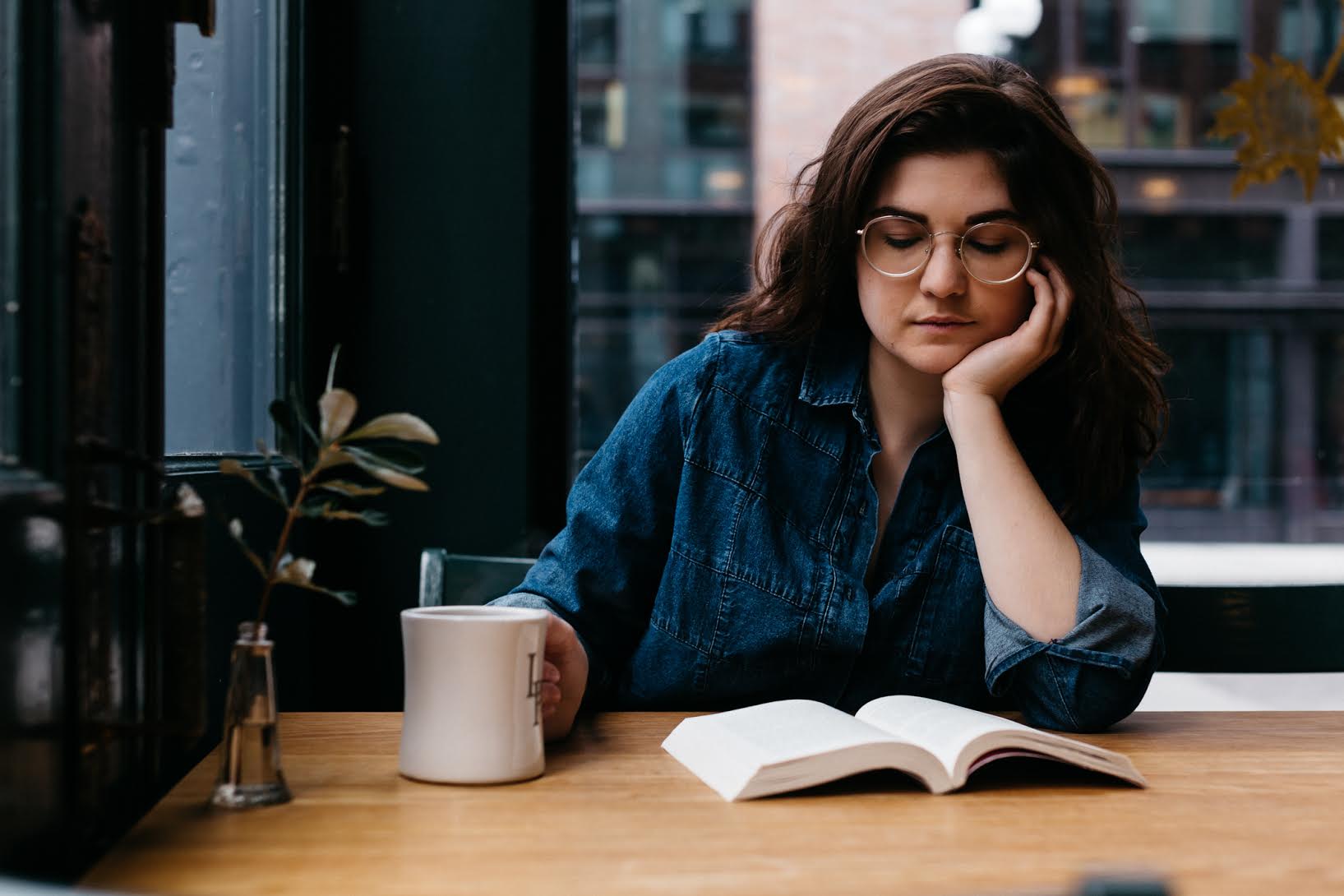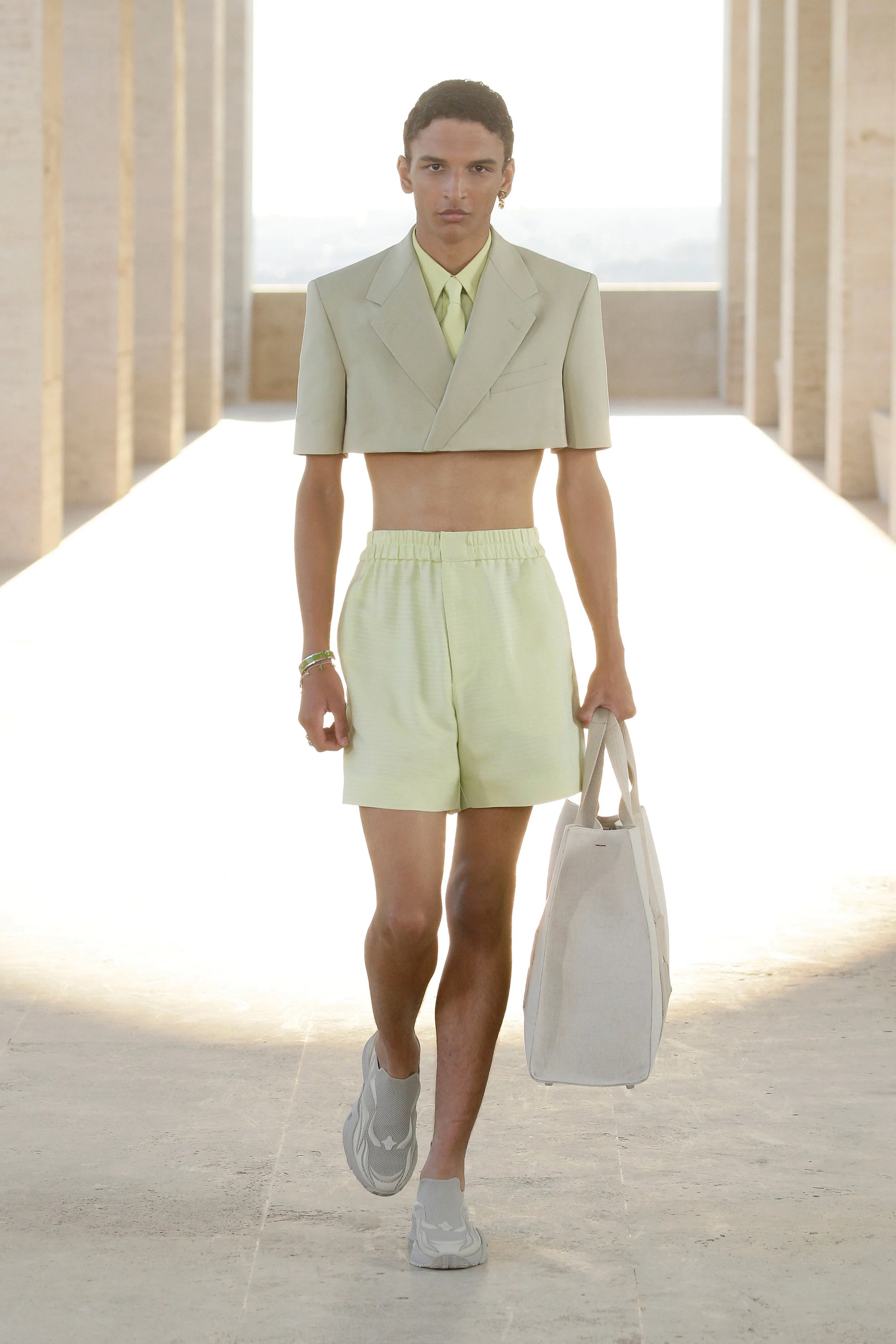Building an Outfit Like a Script with Playwright Stephanie Neuerburg
“How can I trust you? You’re an actor so how can I know you’re not lying?”
UGH. Every actor has heard this line thousands of times. And, undoubtedly, whomever is speaking has a smug look on their face, convinced that what they’re saying is unique and clever.
Those people are missing the point of acting. Actors don’t sit around in dark corners practicing the art of deception. We’re not studying how to trick lie detectors or aiming to bamboozle an audience with some slight of hand.
Actors strive for honesty. Our circumstances within a play may be imaginary, but our character’s reactions should be truthful. They should be a reflection of humanity; how, as humans, we love and fight and long for and despise and celebrate each other. Have you been to the theatre and gotten goosebumps? Cried? Laughed? Been so entrenched in what was happening that you couldn’t turn away even though your seat was old and saggy and your butt was half asleep? That’s honesty achieved.
Actors aren’t alone in this mission. Playwrights, directors and designers are in on this plan, too. This collective quest for truth is what makes theatre magical. Many of us consider theatres sacred. They are our churches, our synagogues, our temples. Inside of theatres, whether they be dingy black boxes or soaring concert halls, we’ve witnessed miracles. And those miracles are spun from honesty.
I doubt I can dress honestly enough to recreate theatre’s magic. An outfit probably can’t insight miracles (though it probably could insight laughter). But why not try? Wouldn’t it be wonderful to wear this magic around with me?
I figured I should start where plays begin - the page. I asked playwright (and my friend!) Stephanie Neuerburg to share her creative process for writing a script. My hope was that I could take her process, follow it (not at my desk, but in my closet), and come up with a theatre-magic infused outfit.
Luckily, Stephanie is a ray of light, an adventurer, and always down to try or see or make something new. See what she had to say and her creative process for crafting a play below:
FROM THE DESK OF STEPHANIE NEUERBuRG, PLAYWRIGHT
Everything I write feels like the last thing I will ever write. Every writing process feels so different - I once wrote an entire one-act play in one night, barely edited it, and it went on to be one of four finalists in a nation-wide playwriting competition. I have a full-length play that I've been writing since I was fifteen years old, and I turn out a new draft once every three or so years. In recent years, I've been feeling lonely, bored, and burnt out - not the greatest fodder for the next Great American Play. But I have started something, and already the process is different from any other play I've written. Here's a step-by-step process, as best as I can make it:
1. Have an idea (this can sometimes take years)
I always carry a notebook with me, just in case the inspiration strikes or someone says something funny or I need to make a list (I love making lists). My day-to-day notebook is a bright pink Moleskin that definitely looked more dusty rose on the website, but whatever. My writing notebook is a super soft leather cover with tie closures. It's heavy and thick and one of my only goals in life is to fill it up. I only take notes about writing in it, and there's a growing list right now of plays I want to write someday.
2. Write down everything you already know about that idea, and ask every possible question about that idea
In my notebook, or a loose piece of paper, I'll write down any thought I have about the play. Most are statements posed as questions, a lot of "why"s and "how"s, questions I need to find answers to before I can write anything. I write down anything I already know for sure - locations, a list of character names, ages, how the play needs to end (if I know). Sometimes I think I know how a play is going to end and then it changes.
3. Add an impossible thing
I read somewhere once that a playwright should always write at least one impossible thing into each of their plays. What that impossible thing is, is up to you. Is there magic? A turntable? Someone unzips their own skin? Whatever it is, write it.
4. No editing on the first draft
Editing as you write allows the doubt to creep in. Every first draft is garbage - no exceptions!!!!!!! Writing until the first draft is completed allows me to see the bigger picture - where are the issues in story structure, in plot development, in character details. Figuring out what you want to say is the first draft. Figuring out how you want to say it is the rest.
5. The rest tends to work itself out
I began this process with a tantrum. I’ve been doing writing double duty, both writing here and taking a writing course, and I was drained of ideas. “Begin with an idea!” I roared to myself, “I just need no ideas! I need an idea break!” And then I thought…. could that be my idea? No idea? A breather? A break? Could I dress myself into relaxation?
I moved onto step two, and began brainstorming everything I knew or could correlate with taking a break: long walks, Netflix, snacks… and then I hit the word space. SPACE!
SPACE!
I dug into the back of my closet and pulled out my (outer)space dress. Then I was on a roll. I added tights, then a big pink corduroy blazer.
Next came Step 3: an impossible thing. What would be impossible for me with this outfit? For years, when I’ve worn a fit and flare dress I’ve always paired it with boots. They kept the outfit from feeling too dainty. It would be impossible for me not to wear boots…
So, I wore velvet Mary Janes! And then I added a beret! A hat! Flats! Impossible! Two impossible things! I felt like Luna Lovegood in Paris!
Onto Step 4: editing. I looked into the mirror. Was this outfit too much for Trader Joes? I took off the hat, I put it back on. I took it off again. I put it on, thought “hell with it!” and went to the grocery store.
Did the rest work itself out? Yes, I’d say so. It’s funny how a little change can make a big difference. I felt so light on my feet wearing flats that I had a literal spring in my step. I bounded around Trader Joes. I bounded into the library. I bounded around the house. When taking photos, I felt like Audrey Hepburn when she does her bohemian dance in Funny Face.
I don’t know if my outfit transfixed anyone. I don’t know if they saw it and felt emotion. They may have thought I was bonkers. (That’s ok.)
I, however, felt a little magical. I would have never put this outfit together without Stephanie’s creative process, but I loved it! And in the end, it was just the break I needed. Wearing this outfit helped me fill up my idea-stores and get back at it!
Before we go - this is the inaugural post for a new category - How They Build It! Every month I’ll be taking a different artist’s creative process and building an outfit around it. Are you an artist or creator? Want to share your process and collaborate with me? Send me an email at costumeparade@gmail.com!
Many, many thanks to Stephanie for sharing her insightful creative process. Stephanie’s bio is below, as well as how you can keep up with her adventures. (Stephanie has fabulous style. I highly recommend following her on Instagram!)
Stephanie Neuerburg is an actor, writer, and producer whose work has been featured at the John F. Kennedy Center for the Performing Arts in Washington, DC; the Oregon Shakespeare Festival; the Edinburgh Fringe Festival; Seattle Shakespeare Company; Livermore Shakespeare Festival; Ashland New Plays Festival; and Eugene O'Neill's historic Tao House in Danville, CA. Her favorite roles include Sue in FINGERSMITH, Daisy Buchanan in THE GREAT GATSBY, Celia in AS YOU LIKE IT, and Ella in her adaptation of ELLA ENCHANTED. Her as-yet-untitled, limited-series podcast about pioneer ghost town history will be released in late spring 2019. You can listen to her original play SCIENCE NIGHT on the new play subscription podcast PLAY4KEEPS. She loves big earrings, big hair, turtlenecks, and polka-dot short suits. More info about Stephanie and her work is available at www.stephanieneuerburg.com, or follow her on Instagram @therealstephanien.



















